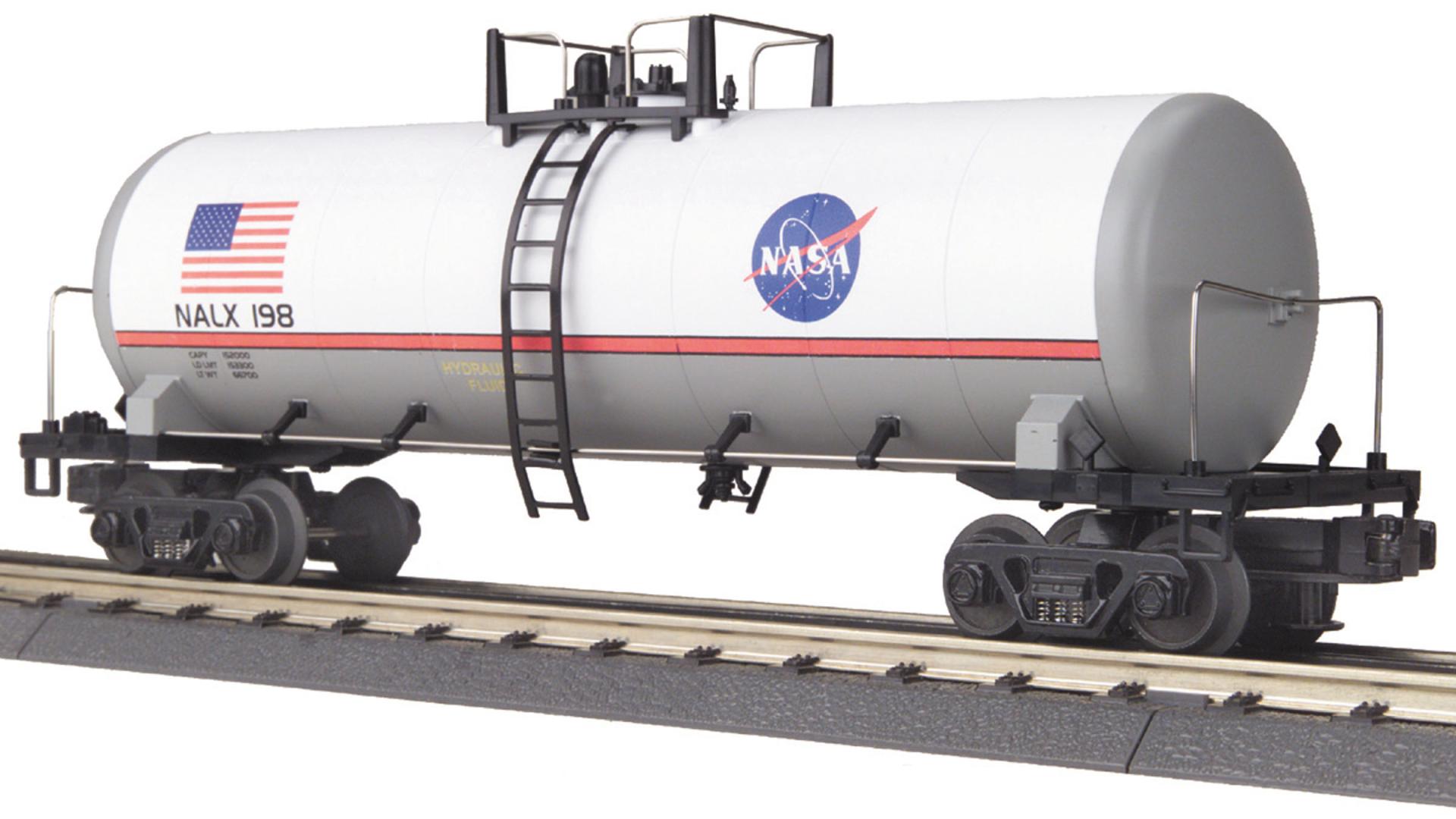
NASA O Gauge RailKing Modern Tank Car
Overview
The one big change during that time was the transition from riveted to welded construction, beginning in the late 1930s. Car builders introduced X-ray inspection of welds to ensure safety, as well as giant annealing ovens that could heat-treat assembled tanks to relieve joint stress. Welded tanks were stronger, less susceptible to rust and corrosion, and less likely to rupture in the event of a wreck.
At the same time as steam engines were disappearing, another innovation completely changed the appearance of tank cars. Beginning in the mid-1950s, a new design took hold: the tank itself became the structural backbone of the car, eliminating the need for a full-length underframe and making bigger tank diameters possible. More recently, tank cars have been required to have "double shelf" couplers designed to stay coupled in the event of a wreck, to minimize the potential for a coupler to puncture an adjacent car. Today's large-capacity tank cars carry a tremendous variety of liquids from oil to chemicals to foodstuffs. Tanks may be lined with glass or other materials in order to carry corrosive liquids, and may have heating or cooling apparatus to protect cargos that are sensitive to temperature extremes.
High quality, traditionally sized RailKing Freight Cars provide detailed bodies and colorful paint schemes for the O Gauge railroader. MTH makes an enormous variety of RailKing Freight Cars, including many different car types and roadnames. No matter what era or part of the country you are modeling, RailKing is sure to have something for you.
Features
Available in Stores
| Dealer Name | City | State | Zip | Contact |
|---|---|---|---|---|
| BRADY'S TOY & TRAIN OUTLET | GREENSBURG | PA | 15601 | 7248388448 [email protected] https://bradystrains.com/ |
